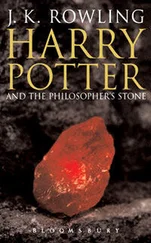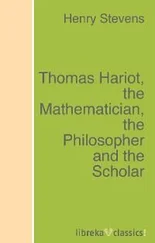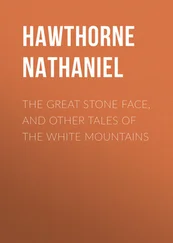“And thus we return to the esoteric side of alchemy,” Helen concluded. “I recall a quote somewhere in the references that I was reading where one 18th century philosopher posed the question: When the Philosophers speak of gold and silver, from which they extract their matter, are we to suppose that they refer to the vulgar gold and silver? The answer was: By no means; vulgar silver and gold are dead, while those of the Philosophers are full of life. This is just another example how the two paths of alchemy were constantly intertwined.”
“I have to concede that,” Marie acknowledged. “From what I read, the knowledge of the European alchemists came primarily from what the Europeans considered to be the pagan world of the Orient with foreign idols and heretical beliefs. The ancient Egyptians were early to develop a highly sophisticated art for smelting ores and refining the metal they recovered. Their art was guarded by the priests in the temples. Bronze and iron objects were often covered with gold. You may recall the task of Archimedes, who was asked to determine if a gold crown was solid gold or a cheaper metal that had been plated with gold. The early metal-workers also invented new, harder golden alloys. All these procedures were considered to be alchemy. At that time, mercury played a major role in metal-working because this liquid metal exhibited such unusual properties. It seemed somehow to be a combination of water and metal.”
“But isn’t mercury still considered to be a special metal today?” Helen asked.
“Yes, that's right,” Marie agreed. “But with the few metals known at the time of the alchemists, it played an especially important role. As was customary at the time, the newly discovered substances were often named after gods and their properties were compared to divine qualities. The properties of mercury were compared to the qualities of the god Mercury. Those of gold were compared to the sun, the Sun God, or with Jupiter, the supreme God. Silver was matched to Luna, the moon, who is considered to be sweet and feminine in the southern countries. The less refined copper was compared to Venus, iron to Mars, tin and lead to Jupiter and Saturn, and so on.
“If one wanted to write down a particular procedure for the preparation of a specific alloy, it was advantageous to use abbreviations in these recipes and to encrypt them using the old mystical symbols. 1 These special characters were understood only by the Adepts, the initiated practitioners of their art. They often deliberately used misleading names. Take a look at this image.” Marie went to the next image on her smart phone ( Figure 3).
“There is more to show you, but I have to go now. I have a lot of homework that I put off yesterday to study for the physics test. Let’s meet by the library again tomorrow for another stroll down Faculty Row. We can see what the professor has been up to. Maybe we will even find him at work on his sculpture. I’m actually excited about taking him up on his invitation to visit him on campus.”
“Good, so am I. See you tomorrow,” Helen said as she gathered things and headed off to the tray-return belt.

Figure 3. A table of alchemical symbols from Basil Valentine’s Last Will and Testament, 1670 2
The afternoon sun beamed down on Helen as she sat on the library steps waiting for Marie. The air was crisp and dry, a perfect autumn day. It was the kind of day that the people in the eastern part of the U.S. call “Indian Summer.” In this expression, the term Indian refers to the Native Americans who lived in the area before the arrival of the Europeans. Helen thought about the life style of the Native Americans. Did they also practice a form of alchemy? After all, much of the philosophy that formed the esoteric path of alchemy appears to have originated in China and India. Helen knew that the Native Americans had not come from India. But recent DNA analyses 3 have confirmed that the earliest Americans had descended from populations in China and eastern Asia. On the other hand, that was thousands of years before the earliest recorded thoughts of alchemy in the western world. Was there anything that might be considered to be the Native American equivalent of medieval alchemy?
Before she started college, Helen had visited Montezuma Castleon a family vacation trip to northern Arizona. Early Spanish explorers of the area had mistakenly associated the impressive cliff dwelling with the Aztec emperor of Mexico. Later research has attributed the design and construction of the “castle” to the Sinagua tribe. The structure was fully occupied between 1100 and 1400 A.D. Helen had been particularly struck by a timeline display in the modern museum on the site. It showed what was happening in Europe while the Sinagua were busy farming the area around Montezuma Castle. While the Americans were building with clay and making tools of bone and stone, the European’s were building the Cathedral of Notre Dame in Paris! Roger Bacon had sent his scholarly categorization of alchemy, his Opus Majus, to the Pope Clement IV in 1267. Clearly there was no link between formal exoteric alchemy and the scientific thoughts of the Sinagua.
As she watched Marie walking toward her along the college “Quad,” Helen concluded that any direct connection between the philosophy and religion of the European alchemists and that of the Native Americans was quite unlikely. Still, she speculated, if there were any similarities they might be very fundamental to an understanding of human development and spirit. She made a note to herself to keep this thought in mind for a future paper that she might have to write in a more advanced Philosophy course. 4
“Hi, Helen,” Marie called out as she approached. “What a fantastic day!”
“A day custom-made for us by Zeus and Hera themselves,” Helen responded, specifically referring to the Greek gods of the Sky and Air who were the head of all the other gods of weather, the so called Theoi Meteoroi . Helen was beginning to get quite wrapped up in this Greek Philosophy thing. She picked up her book-bag and the two of them set off in the direction of Faculty Row, both eagerly anticipating the progress that the professor might have made on his United States of the Elements.
Their anticipation was rewarded by the sight of Professor Wood busily at work on his sculpture.
“Hello, Professor,” Helen yelled out once she was within earshot of the site.
The professor turned with a welcome smile toward the approaching students. He had made some noticeable progress in his work. The top two rows of the spiral were now clearly visible below the odd Moorish-looking cap at the top of the column. The professor had marked radial lines on the surface of the spiral and had chiseled off the outer edge of the top row, forming a rough representation of the irregular “teeth” that they both recalled from the illustration that Professor Wood had shown them earlier. The three-dimensional model itself stood on a small collapsible table near the main work. Two pairs of calipers lay on the table near the model.
“Wow!” Marie exclaimed. “It’s coming right along.”
“Well, thanks,” returned the professor, “but I still have a long way to go.”
“Of course,” said Marie, as the students admired the work in detail. “I have a question,” she continued. “Why are the teeth not all the same? Some stick out further than the other and have different shapes to their upper surfaces.”
“That’s because they are not actually teeth. Each tooth, as you call it, represents a different element of the periodic table.” He held up the model to show them. Actually, each of these segments is a three-dimensional representation of the effects of temperature and pressure on the element to which it corresponds.”
Читать дальше













